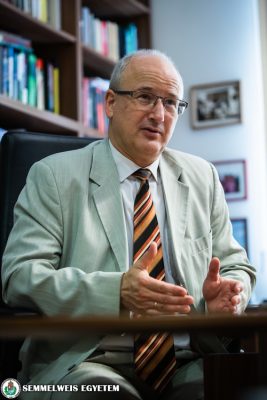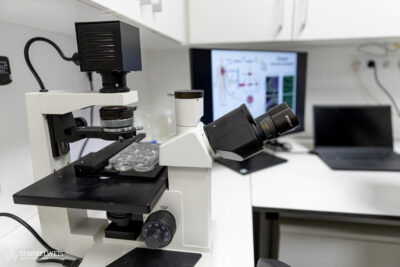The correlation between cardiomyopathy and the mutations of the giant protein, titin is being explored at the university’s Department of Biophysics and Radiation Biology. According to Dr. Miklós Kellermayer, Dean of the Faculty of Medicine and director of the department, the studies are essential in order to determine, whether the mutations of titin, a protein playing a major role in the regulation of myocardial contraction, may cause cardiomyopathy leading to heart failure. The multi-level biophysical research is performed, among others, with a newly developed and installed laser tweezer device.
 “In order to more efficiently diagnose and treat cardiomyopathy, which has become an endemic disease, it is necessary to understand cardiac mechanisms on the level of molecules, muscle tissues, organs and the whole body. Currently we are working on the development of methods that are suitable for the direct mechanical manipulation of protein molecules and cells responsible for myocardiac function as well as for the identification of changes caused by cardiovascular motility and the characteristics of fluid mechanics.”, said Dr. Miklós Kellermayer.
“In order to more efficiently diagnose and treat cardiomyopathy, which has become an endemic disease, it is necessary to understand cardiac mechanisms on the level of molecules, muscle tissues, organs and the whole body. Currently we are working on the development of methods that are suitable for the direct mechanical manipulation of protein molecules and cells responsible for myocardiac function as well as for the identification of changes caused by cardiovascular motility and the characteristics of fluid mechanics.”, said Dr. Miklós Kellermayer.
Research related to cardiac muscles have long been taking place at the Department of Biophysics and Radiation Biology. Recently, it has been discovered that the mutations of titin, the protein playing a major role in the regulation of myocardial contraction, may cause cardiomyopathy leading to heart failure. Therefore, the primary focus of research at the department is the exploration of this relationship.
“We are studying the properties of titin, a protein determining cardiac elasticity, on the level of individual molecules using samples from the explanted cardiac tissue bank of the Városmajor Heart and Vascular.”, Dr. Miklós Kellermayer said.
The multi-level studies are performed by a laser tweezer device recently developed by Dutch researchers.
“When using the laser tweezer, the pearls of a micrometre in diameter attached to the ends of the titin molecule are grasped. Thus, the molecule can be stretched to measure its structural changes and flexibility.”, explained Dr. Miklós Kellermayer.
Researchers of the team compare the mechanical properties of titin molecules isolated from normal and pathological tissues to determine the phases through which the structural changes in titin may result in pathological conditions. The work of the research group may contribute to drug testing and drug development in the future.
Zsófia Haszon-Nagy
Photo: Attila Kovács – Semmelweis University
Translation: Ágnes Raubinek


